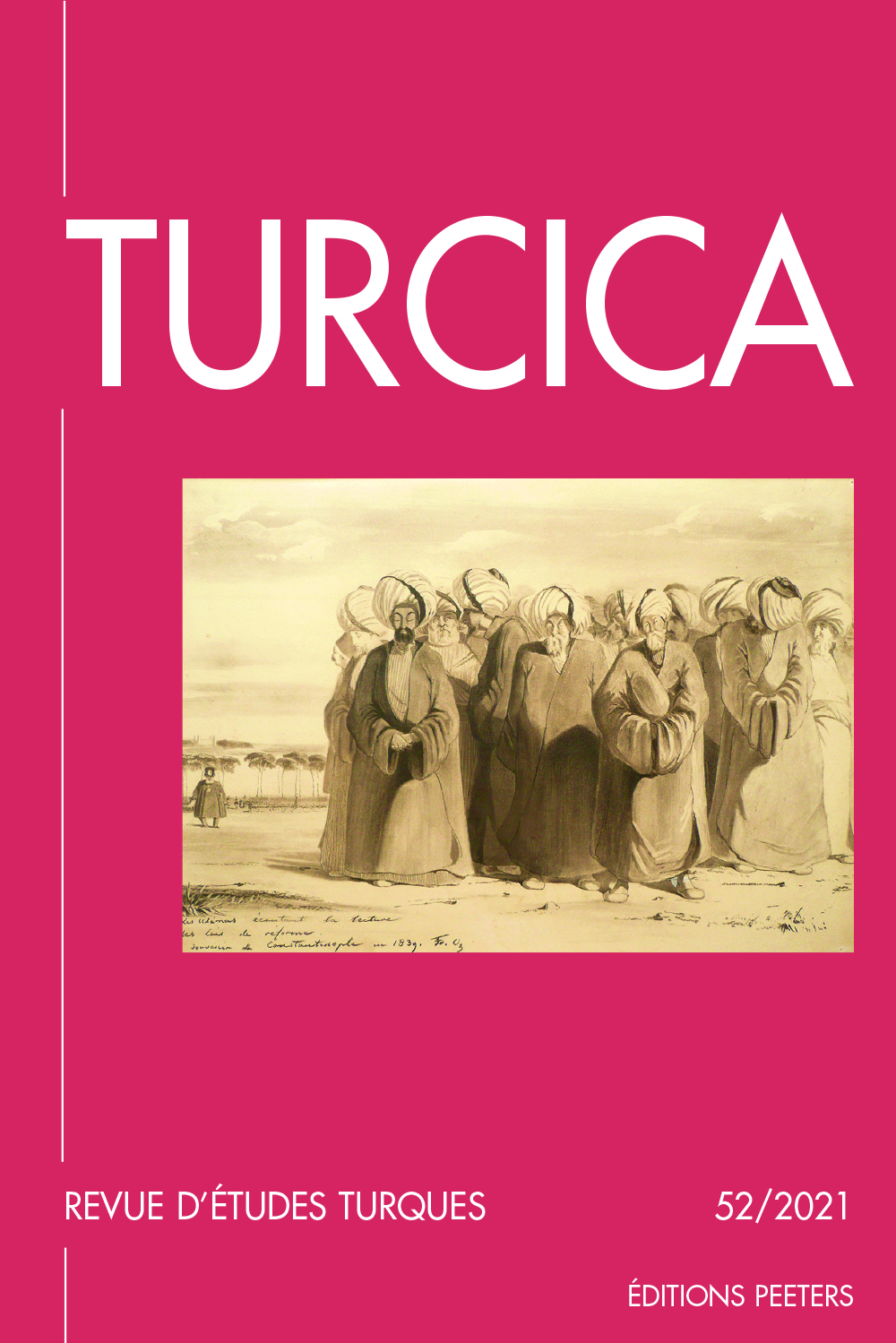 previous article in this issue previous article in this issue | next article in this issue  |

Preview first page |
Document Details : Title: Un türbe sans maître Subtitle: Note sur la fondation de la destination du türbe de Soliman-le-Magnifique à Szigetvár Author(s): VATIN, Nicolas Journal: Turcica Volume: 37 Date: 2005 Pages: 9-42 DOI: 10.2143/TURC.37.0.2011699 Abstract : On connaît mal les origines du türbe, aujourd’hui disparu, qui s’élevait sur le site où Soliman mourut en 1566, devant la forteresse assiégée de Szigetvár. On a longtemps admis qu’il abritait les entrailles du sultan, et avait été construit sous le règne de son fils Selîm II. La documentation d’archives permet pourtant de conclure qu’il s’agit apparemment d’une légende. En septembre 1573, un an environ avant le décès de Selîm, le site était un verger à l’abandon qu’on envisageait seulement de restaurer et protéger. C’est vraisemblablement dans les premiers mois du règne de Murâd III que fut décidée la contruction d’un ensemble comportant un lieu de culte (mescid), un tekke halveti et un türbe. La volonté d’affirmer la valeur symbolique du lieu et le caractère irrévocable de la présence ottomane paraît claire. On peut en revanche se demander pourquoi cette volonté se manifesta à ce moment. Il ne semble pas qu’il faille chercher une réponse dans le changement de sultan, ni même dans les relations avec les Habsbourg (qui étaient plutôt bonnes), mais plutôt dans l’apparition dans la région de Georges Zrínyi, le fils du vaincu de 1566, dont les Ottomans pouvaient craindre qu'il ne revendiquât la place et tentât un coup de main heureux alors que les armées du sultan faisaient la guerre loin de la Hongrie. A Türbe without Owner. Note about the Foundation and the Destiny of Süleyman the Magnificent’s Türbe in Szigetvár We have little information about the origins of the now lost türbe of Süleyman the Magnificent in Szigetvár, on the site where the sultan died in 1566 in front of the besieged fortress. It has long been taken for granted that his bowels were buried there and that the türbe had been built during the reign of his son Selîm the second. The archival data allow us to conclude that this is probably a legend. In September 1573, one year before Selîm’s death, the place was an abandonned orchard, which was only to be restaured and protected. It is apparently during the first months of Murâd III’s reign that it was decided to build a complex comprising a mescid, a Halveti tekke and a türbe. Such a decision clearly showed the will of declaring the symbolic value of the place and the irrevocable character of the Ottoman presence. But why did this will appear at that time? It seems that the answer is to be found neither in the change of sultan nor in the relations with the Habsburg (which were quite good). It could rather have something to do with the apparition in the region of George Zrínyi, whose father Miklos had been defeated at Szigetvár in 1566, for the Ottomans could fear that he would claim his rights on the fortress and succeed in a lucky raid while the Ottoman armies were fighting far away from Hungary. |
 |


